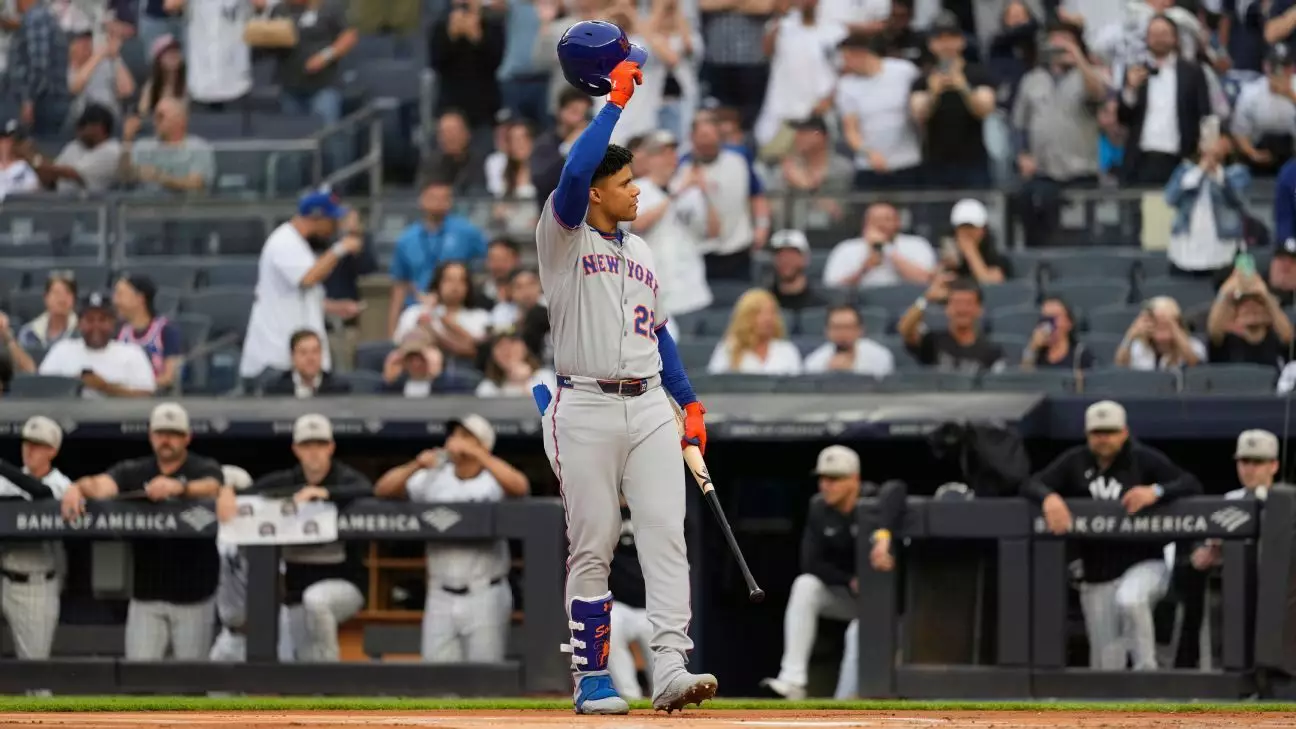Juan Soto’s much-anticipated return to Yankee Stadium in a Mets uniform was marked by an eruption of boos and disdain from fans who felt betrayed by his offseason decision. Choosing the Mets over the Yankees was a choice that certainly didn’t sit well with the Bronx faithful. However, unlike many athletes who might buckle under such pressure, Soto faced it head-on. Instead of succumbing to the negative energy, he demonstrated a combination of confidence and self-awareness, acknowledging the fans’ feelings with a playful gesture. “I was ready for it,” he remarked, fully aware that passionate supporters often express their emotions through vocal outbursts.
In a dynamic filled with animosity, Soto chose to engage with his critics rather than retreat into silence. Before stepping up to the plate, he tipped his helmet, offering a silent recognition of the intensity surrounding him. That simple act was a masterclass in public relations and display of emotional intelligence. When a player navigates the sometimes choppy waters of fan sentiment as adeptly as Soto did, it reveals a depth of character that transcends the sport itself.
The Weight of Expectations
Soto’s on-field performance was met with mixed results, drawing a parallel to the tumult of his off-the-field existence. His transition from an iconic Yankee to a new Met has placed him under a significant microscope, and fans have long memories. Even with the burden of his massive 15-year, $765 million contract—the largest in North American sports history—Soto’s contribution to the game was inevitably gauged against the resentment he faced that night.
With each at-bat, Soto’s stats seemed to symbolically reflect the burden of that transition. He managed to walk three times, a testament to his keen eye and understanding of the game, yet failed to make a significant impact on the scoreboard when it mattered the most. In moments where one would expect a superstar to shine, he found himself grounded out or flying out, leaving the New York crowd even more eager for a spectacle. Despite a stat line that suggests a resilient player, Soto’s .252 batting average and .845 OPS early in the season paint a different narrative: one of adaptation and challenge.
Missed Opportunities and Lessons Learned
Defensively, Soto’s failed attempt to gun down a runner at home plate and his careless throw into the stands highlighted a struggle that contradicted his reputation as one of the game’s premier talents. Moments like these create conversations around player performance that can often hold more weight than the chaotic atmosphere. However, they also create valuable learning experiences. As many seasoned athletes can attest, the rectification of mistakes can serve as crucial stepping stones in a career marred by high expectations.
What was particularly fascinating about the night was how the fans reacted. The Bleacher Creatures, known for their relentless support, turned their backs on him—an act of rebellion and disappointment that further encapsulated the emotional landscape of the evening. Yet there’s a beauty in this kind of raw confrontation; it reveals how deeply intertwined relationships are within sports culture. The cheers and jeers reverberate within the walls of the stadium, echoing sentiments that go well beyond the game itself.
The Essence of Professionalism
In his post-game reflections, Soto displayed an admirable degree of professionalism. He stated, “I don’t focus at all on fans. We got to focus on the game and be a professional.” This sentiment captures the duality of his position: he must carry the responsibility of living up to massive expectations while navigating the emotional complexities of a fanbase that is as fierce in their support as they are in their rivalry.
Soto’s mindset is an essential lesson for aspiring athletes and seasoned veterans alike. The ability to compartmentalize criticism while maintaining a focus on team goals is pivotal in professional sports. In recognizing the distractions around him, Soto shows a maturity that suggests he may very well rise above the challenges posed by hostile fans and internal pressures alike.
In the end, while Soto’s return to Yankee Stadium was anything but smooth—and filled with a barrage of boos—he handled the situation with an unsettling grace that suggests he is far more than just another athlete enduring the complications of high-pressure environments. His journey in New York is just beginning, and it remains to be seen how the narrative will evolve.

